Luffa aegyptiaca and Luffa acutangular
When I was a young girl, we didn’t use washcloths with our baths or showers. We did not have the puffy, plastic mesh scrubbies sold at dollar stores today.
We used a loofah sponge, and it wasn’t until I was a grownup that I realized we grew these in our backyard garden!
Loofahs on the market today are sometimes synthetic, meaning they are not made from the gourd plant that these were originally modeled after.
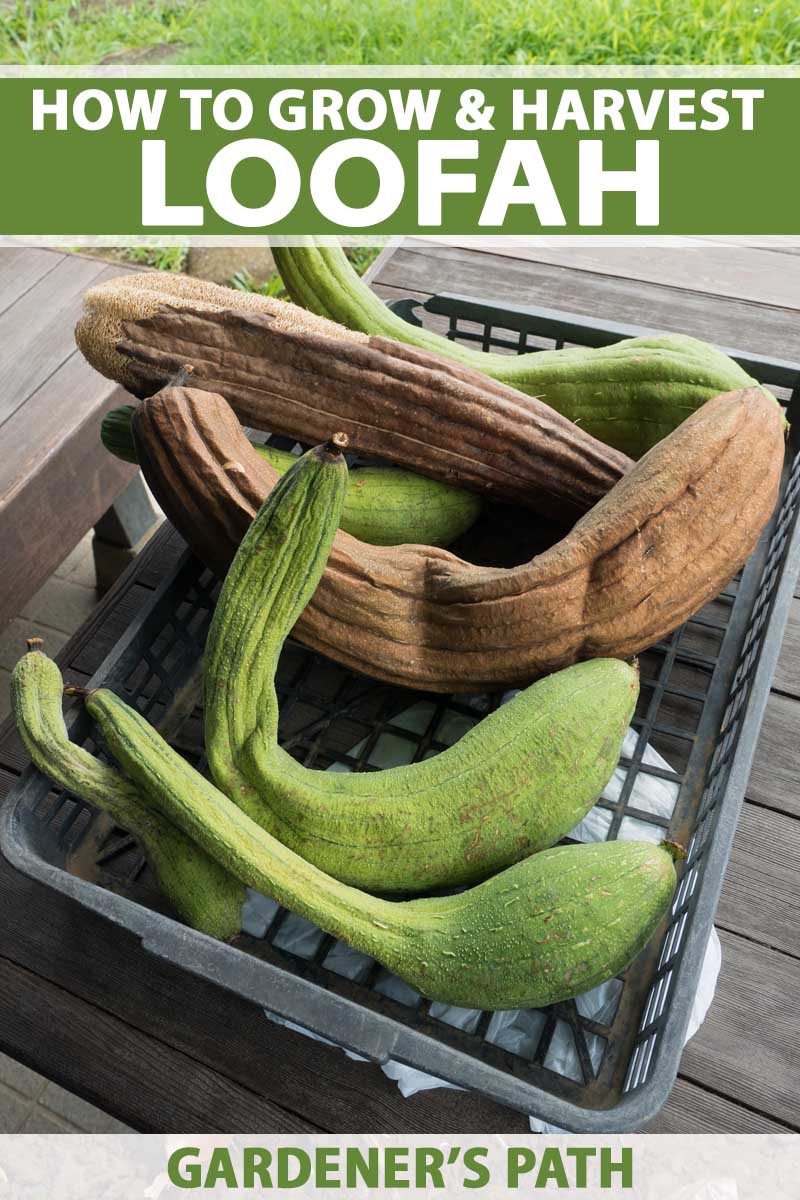
We link to vendors to help you find relevant products. If you buy from one of our links, we may earn a commission.
The real deal is a combination of soft and exfoliating, with the ability to absorb just enough water and soap to get a good lather going!
Loofahs obtained naturally from the garden can be of many sizes and shapes and are great for several household uses beyond washing up in the tub.
Let’s get started!
What You’ll Learn
Finding Luffah Varieties
First, note that loofah can be spelled many ways, among them: luffah, luffa, loufa, and even just luff.
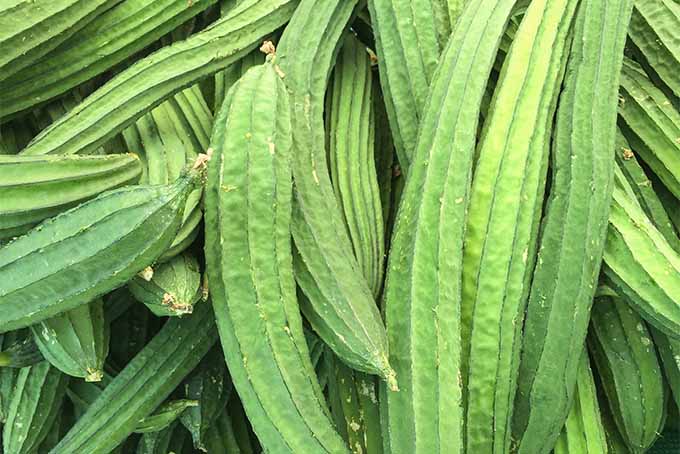
Obtaining loofah or luffa gourd seeds hasn’t been as easy in the past few years as when my mother planted them years ago. I searched quite a few garden centers and farm supply stores before I found them.
You might find it easier to search online for this species, which is also called Luffa aegyptiaca or Luffa acutangular.
Heirloom luffa seeds are available from Burpee in packets of 25 seeds. These can be harvested young to enjoy as a vegetable, or allowed to grow on the vine for ornamental use as sponges until they reach about 7 inches in length.
Some cultivars are more elongated and skinnier than others. Choose a well-rated variety from a seller that has shown success with their harvests.
Planting Sponges in Your Garden
In the spring, when the danger of a hard frost has passed, plant the seeds in the same manner you would any squash, pumpkin, or melon.
Make several hills, about a foot apart, along a fence or other climbing surface. These plants love to grow upward and wrap around anything near them.
Giving them a place to hang will help them keep the fruits from spoiling closer to harvest season.
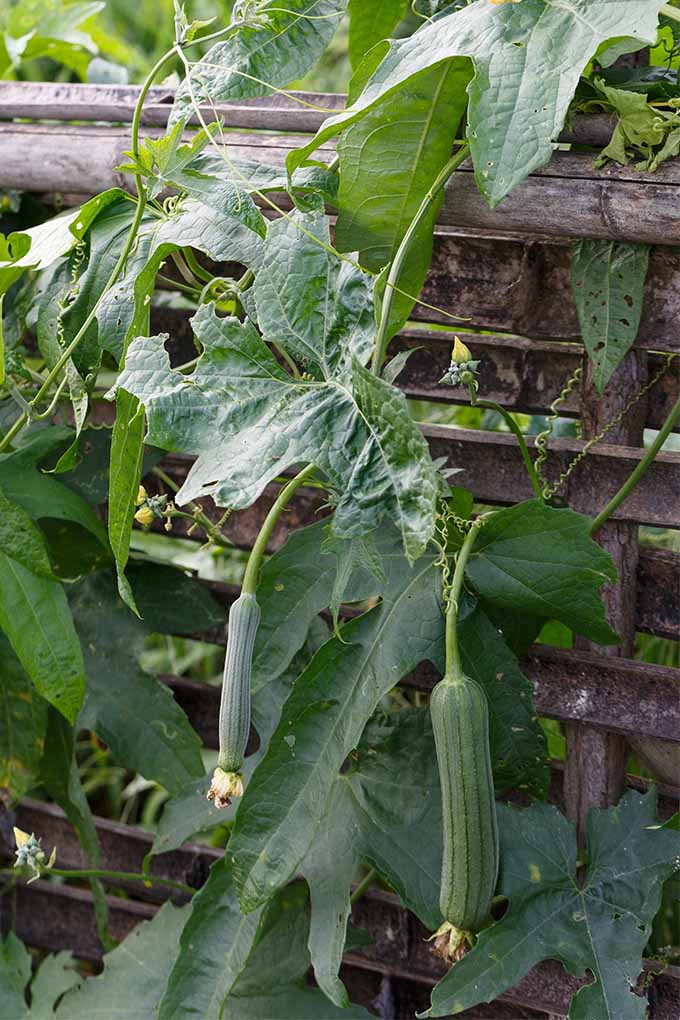
You can plant two seeds in every hill if you’d like to increase your odds of ensuring that one plant will grow.
When each seedling has grown to about two inches tall, thin to a single plant per hill.
Luffa gourds need to be kept adequately watered, and they really like sunight.
Maintenance
If you’ve had experience removing the first flowers and the male flowers of other plant breeds, you may choose to implement this technique with the loofah. Otherwise, I’ve found it to be best to just leave it alone, as this practice tends to damage vines.
I also treat my luffah plants to a regular dusting of diatomaceous earth in the late summer and early fall when squash beetles are most dangerous.

You will want to keep an eye on any “strangled” gourds that may become entrapped in the climbing fence.
When the luffah fruits are small, be sure that they are on just one side of the fence. Many will try to poke through fence gaps and grow on both sides of the boundary at once, resulting in deformed fruit that cannot be harvested later.
Harvesting
Picking the loofah is similar to the method for harvesting any other squash or melon.
You will want to pinch or cut the fruit off at the vine, leaving the plant in good shape for any other gourds that need to finish ripening. Knowing just when to harvest, however, is a bit of a challenge.
Loofah is an edible plant, so you can harvest young and eat them in the same manner you would a young zucchini or summer squash.

They are fickle plant in terms of taste, going from tender to terrible in a manner of weeks.
For this reason, many choose to use them for their unique main purpose, allowing them to stay on the vine for a late summer or early fall harvest. These growers are interested in the sponge, of course!
If you know that frost is coming soon, you must pick. Even slightly unripe loofahs can be used, although they may be smaller in size.
Otherwise, when the fruit feels very light, and the skin has become dry and dark in color, it’s ready to harvest.
Preparing the Sponge
Now comes the unique task of turning gourd into sponge. I find the loofah to be a smelly gourd, so you will want to do this work outside, on a garden table or patio. You’ll need:
- A large stone or rolling pin.
- Bucket of warm water with a teaspoon of bleach.
- Scissors or pruning shears.
Start by laying the luffah on a flat, solid surface. Strike it with the rolling pin or stone, knocking off as much of the dried outer skin as you can. You may also see some seeds come loose during this process – this is a good thing!
Any stubborn skin fragments can be peeled off with your fingers or cut away gently with the shears. I personally find the skin to be tough for my arthritic hands to peel, so the shears are nice to have.
The riper the gourd, the easier it will be to peel. If you had to pick some immature gourds, you’ll find the skin harder to remove. For these, cutting one end off with the shears and peeling like a banana may be your best strategy.
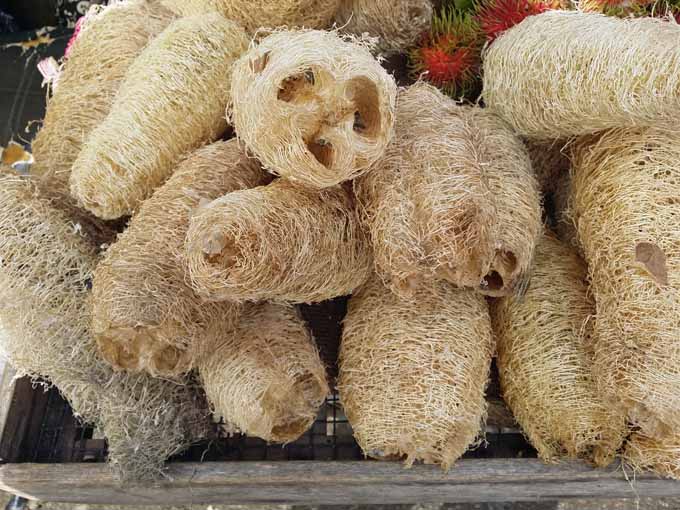
Once the skin and seeds are gone, you’ll find coarse, fibrous material inside. It should be yellow, brown, or even black.
You can soak the dark and somewhat unappealing loofahs so that they appear fresher and cleaner, if you wish. A quick bath in a solution of bleach water (one teaspoon bleach to a gallon of water) for a few minutes will do.
Rinse the gourds by spraying with a high-pressure hose. You may also wash them in soapy water. All the seeds, and any rotten material or signs of mold should be removed completely.
Allow the gourds to dry in the sun over the course of a day on a towel spread out on your garden table. Turn regularly to dry evenly and get rid of all the moisture.
Once completely dry, you can store luffah sponges anywhere in your home that is dry and free from pests.
Additional Uses
In addition to making a great bath time exfoliator, they are effective at washing up around the house.
These homegrown sponges work wonders on grout, make a scratch-free option for cleaning delicate porcelain, and even help to remove grass stains when used with your favorite laundry pre-treater.
I’m especially fond of how they take grime off my cast iron pans!
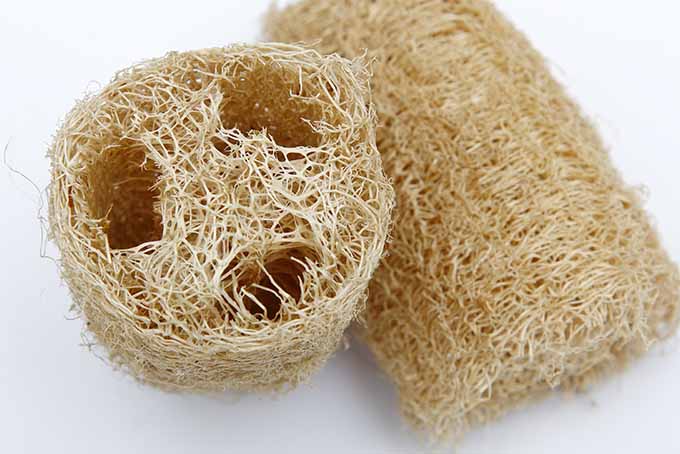
The same loofah can be used over and over, provided you keep it clean after each use and allow it to dry. You may hang it in a mesh lingerie bag on the clothesline or put it in your dish drainer between uses.
One harvest will last an entire year until the next fall’s crop comes in!
Odd Gourd Produces Fantastic Results
Growing loofah is a somewhat of a lost art that I’d love to see make a comeback in gardens everywhere!
They are a basic gourd, with the same needs as most decorative vines, but with the added benefit of a tasty young fruit.
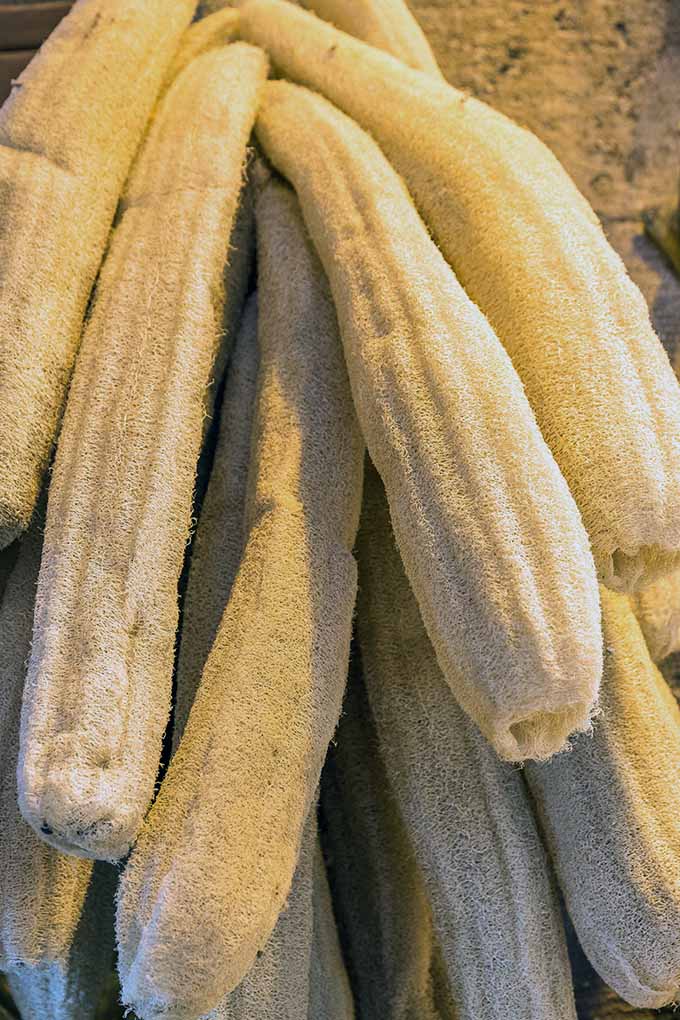
With just two or three plants a year, you can also equip your home and vanity with durable, sustainable cleaning and grooming tools that put their synthetic counterparts to shame!
This sponge also makes a special gift. Many gardeners have found success selling them at farmer’s markets, craft shows, and online at sites like eBay and Etsy!
Have you ever grown luffa? What ways can you think of using this miracle gourd? I’d love to hear your stories, especially how you’ve successfully removed the stubborn seeds and skin!
And if you enjoy gourds like we do, you’ll love some of our other guides:
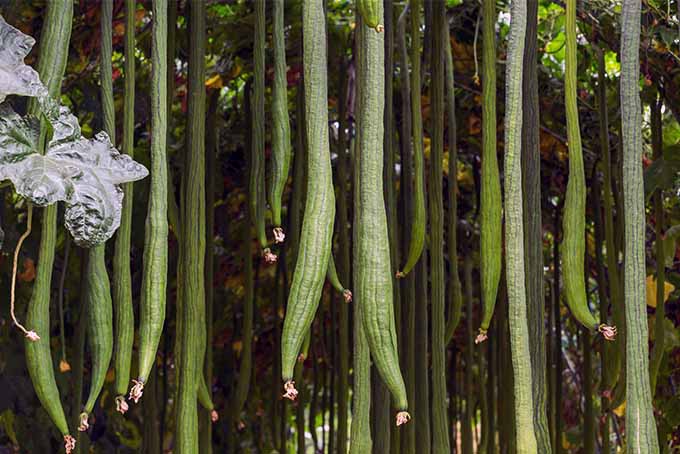
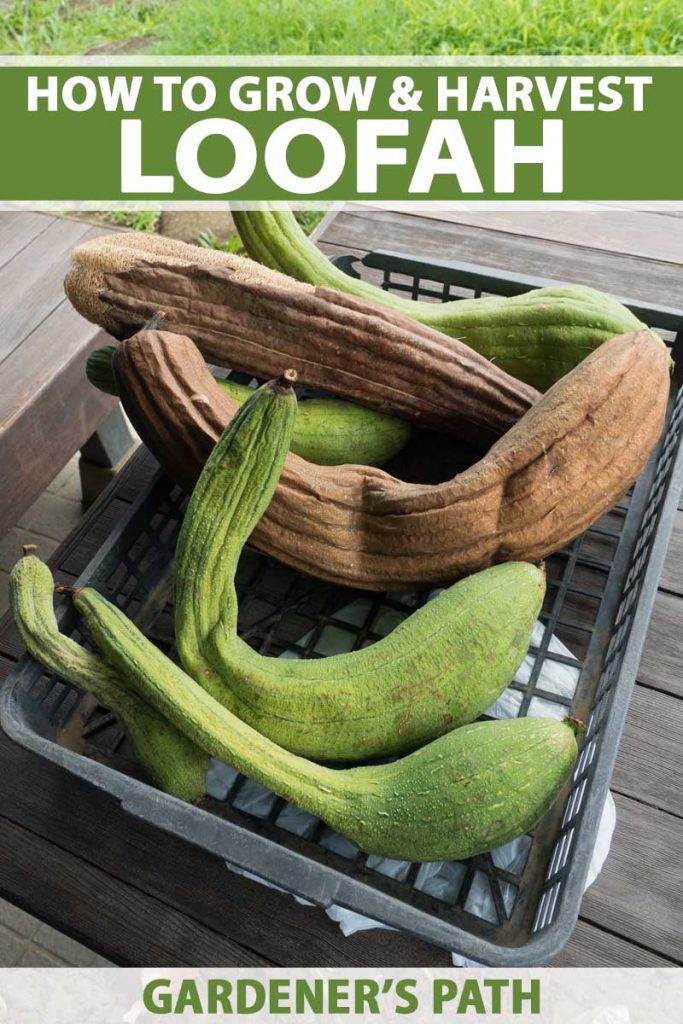
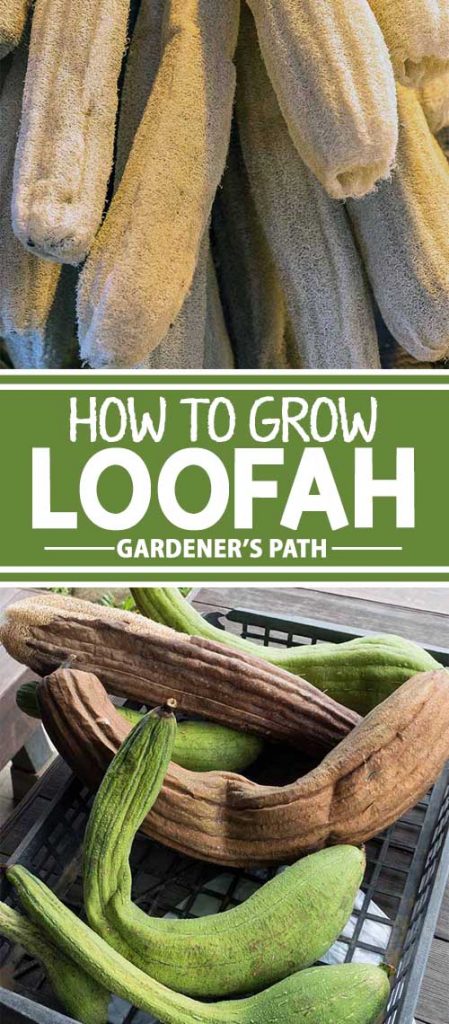
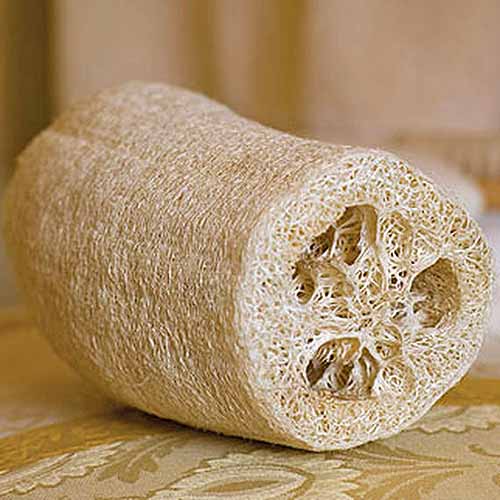
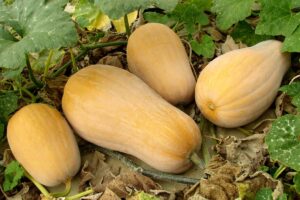
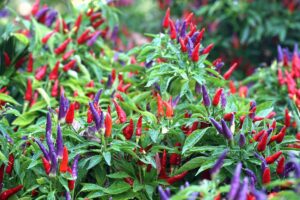
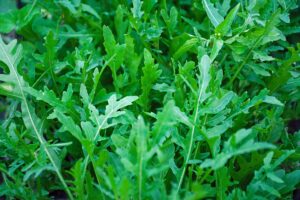
Enjoyed your article, I had no idea! Thank you
Thanks so much for reading, Judy! Any plans to plant some of your own? We’d love to see the results at harvest time. Happy gardening!
Hi, I came across your article when searching for tips on how to grow loofah. My loofah plants are thriving in the garden but only with lots and lots of vine+leaves, and male flowers. Is there anything that i can do to promote the growth of female flowers? Thank you!
Great question, Irene. Have you ever had your soil tested? While high nitrogen in the soil can cause lots of plants to grow beautiful green, leafy foliage, that’s obviously not what we’re going for with fruiting plants. For loofah in particular, boosting the phosphorus content in the soil can help. There will also typically be more male than female flowers on a healthy plant, but pollination can be an issue. Do you have a lot of pollinators in the area, and have you noticed them visiting your plants? If you do eventually get your plants to produce any female flowers… Read more »
Just got some seeds from a fellow gardener. Going to give them a try this year. I’m in SC, too hot for them @ 80s 90s all summer?
Loofah does well in warm climates, and can be direct sown in USDA hardiness zones 7a and higher!
I grow them in Arkansas. They love the heat but like to be watered every day.
Hi Lindsey, My folks are big gourd growers and their town boasts the biggest gourd festival around…maybe in the US, I don’t know. But growing up, they grew loofah gourds. My job was shaking all the seeds out of the dried gourds. It was fun….for a while. 😎 We grow edible gourds just for eating now. Check out the varieties at Baker Creek Seeds.
Can we grow them at home or on the balcony? X
This plant can absolutely be grown at home, and it loves to climb. With a 5-gallon pot and a sturdy trellis, loofah can thrive in a small space.
Hi can I plant the seeds from a dried loofa directly into the ground ?
Absolutely, Kristy! Direct sowing seeds that you’ve saved is a great way to grow this plant. Just keep in mind that you may be in for some surprises – loofah crosses easily with other squash and gourds if grown nearby.
When do loofah plants flower? My vines are huge but no flowers. What has gone wrong. It is September in Ohio.
My vines were huge before I finally got flowers and eventually some loofas! Hopefully you will see them soon. Im in Ohio also. Good luck!
Sorry to hear that your vines haven’t produced, Nancy! Do you know what type you are growing, and was there any information about the expected number of days to maturity on the seed packet? Loofah plants generally reach maturity about 90 days after germination, and this and other curcubits generally flower about 30-50 days after germination. Some varieties take even longer, and though I am not familiar with growing these personally, I have heard of day length sensitive varieties that require a certain amount of daylight hours per day, which gardeners sometimes artificially adjust with daylight blocking row covers. Since… Read more »
I found this article about harvesting your gourds and thought I would share. Easy way to clean them and peel the skin. Its from the NC State Extension Publications.
https://content.ces.ncsu.edu/commercial-luffa-sponge-gourd-production#section_heading_4057
[Content redacted by editors for copyright reasons and link inserted]
Jeanine Davis
I have free loofah seeds from this year if interested. First year planting them and OVERLY successful!
Just found this link, do you still have seeds?
Hello melody…could you please send me some seeds…I live in Canada nova Scotia . ..the east coast mailing adress…Box46 2487 old mill rd.annapolis county nova Scotia B0p1w0 . Thank you..it will be exciting to see if someone will send . ..
Brenda Moody. This is our first year of growing them, if they turn out and have seeds i will send you some.
Jane.
Jane – let me know if you have a few extra seeds. I’m in FL and I want to try growing them! Thank you.
Hi Melody, I am in California and would love a few seeds! Thanks….????
I’m in the UK and would love to try growing them, if you are able to post any seeds to me please?
Loofa’s are a pain in the ass! I finally have my first two on the vines after an unsuccessful first attempt last year. My concern is that it’s the first week in September and they are only the size of a pencil. Will they have enough time to mature and dry on the vine??
I was able to grow loofah in my front yard successfully! One loofah alone produced at least a hundred seeds! I have about ten loofahs in my yard! I am grateful for this blessing from our earth
Hello Claudia, so happy to hear of your success!
I have about 5 acres. How often should I irrigate during dry season in Uganda it’s now so hot
Hello Moses we’re happy to have you reading in Uganda.
Your loofah will need two inches (about five centimeters) of water per week during the growing season.
You would do best to water at the soil surface, not from above the leaves when that’s possible. Water twice per week, 2.5 centimeters at a time.
Good luck, and please share the news if you do grow loofah.